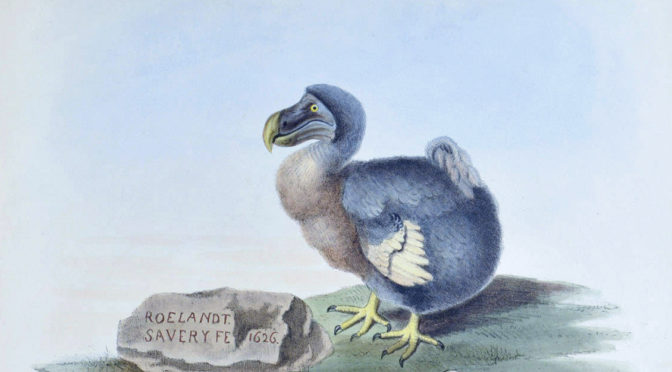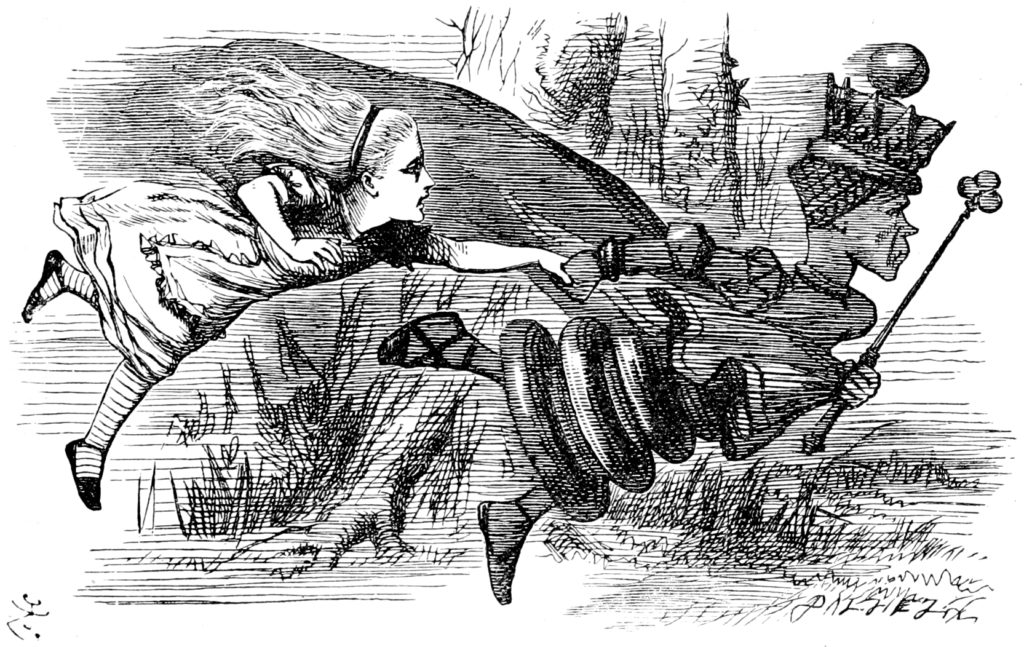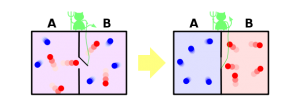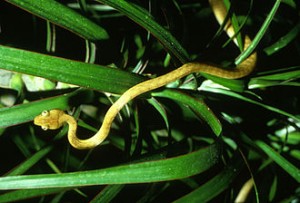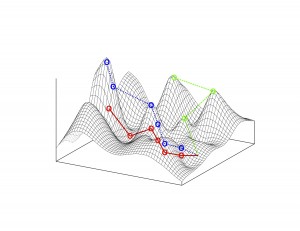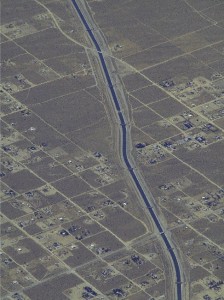It should be obvious to anyone by now that there is something special about the human species. We are the most dominant species the planet has ever seen. How did this happen? Does intelligence always lead to dominance once it passes a threshold? Are we the most highly evolved or most advanced species? Does it even make sense to say that some species are more advanced than others? (I was inspired to answer this question by similar questions asked on Quora, for example here and here.)
Since the Copernican revolution, there have been many similar revolutions that kept moving us further from the center of the universe. For example, we now know that the Milky Way is just one among billions of galaxies, and that our planet isn’t even close to the center of it. More recently, many of these revolutions have come from biology. For instance, we now know that we’re just one of about five thousand species of mammal, that there are other species that have figured out how to use tools, and that some species even have culture, such as the various hunting techniques that orcas use. Some species have better memories than we do, can count better, and apparently some are as much capable of empathy as we are. Not only are dolphins possibly even more intelligent than chimpanzees, they also develop self-awareness at an even younger age than humans. It even looks like we’re not the only fire manipulating species anymore (also see here). The more we learn about other species, the harder it gets to find anything that makes us exceptional.
To some, the ultimate symbol of how far the Copernican revolution has advanced might just be the latest phylogenetic tree that has been constructed of all 2.3 million known species. In this “tree of life” we are just one of millions of leaves, prompting many to proclaim how utterly insignificant we are in the big scheme of things. Obviously, they are committing the fallacy of equating length of development time with competitiveness of the product. With this view, the modern Copernican revolution has now overshot its goal of a scientifically realistic assessment of our place in nature. Just based on our ever-increasing ecological footprint, we know that we are the dominant species on Earth, and the data are so solid that many scientists are calling for a renaming of the current geological epoch — the Holocene — to the Anthropocene.
It should be emphasized that it’s not normal for there to even be a dominant species. Before us, there has never been a dominant species on Earth, and there is nothing in ecological theory that would predict the emergence of such a species. Conversely, ecological theory has no trouble modeling species coexistence and biodiversity. So we need to look elsewhere for an explanation of human dominance.
It’s commonly believed that we are so dominant because somehow we’ve evolved to become the most advanced species. But what does “most advanced” mean, and how did it happen? We all know what it means in the context of technology. An electronic hand-held calculator is obviously more advanced than an abacus. It took a lot longer to develop, it has way more useful features despite being smaller, cheaper, and faster, and is therefore better adapted to the hand-held computing niche and can easily out-compete any abacus. Just as our industrial products require more development effort in order to remain competitive in the marketplace, so do more complex and effective biological adaptations typically require longer periods of natural selection to evolve. This suggests that we define the more advanced biological species as the one that is sufficiently adapted to its ecological niche that it can out-compete any other species in that niche.

By that definition, doesn’t it mean that all species are equally advanced? If we disregard humans for a minute, I’d agree for the most part. After all, all extant species have survived billions of years of evolution. By far most species that ever existed have gone extinct. The species we see today are the few that survived — they are the absolute champions in their respective niches. In other words, every species is the most advanced species in its own niche. And it doesn’t matter whether we’re comparing a rare endemic such as Munz’s onion (Allium munzii) with a globally common species, such as the common raven; within their niches they are equally successful. Some niches just happen to be bigger than others.
Species do occasionally go extinct. Sometimes it’s because of some disaster, such as a large volcanic eruption that affects many species equally. It’s just bad luck, and doesn’t mean the species weren’t advanced enough to survive. However, sometimes it happens that a competing species becomes a bit more competitive than another, perhaps because it adapts a little faster to a changing environment, and the other species goes extinct. In that case one could say that the faster adapting species was more advanced than the species it replaced. However, this doesn’t happen very often, and all we see now are the winners.
On a larger scale, one could argue that some groups of species are more advanced than other groups of species, depending on geography. For example, island species have coevolved with fewer species, and therefore they’ve evolved fewer adaptations that are needed to be competitive with other species. That’s why the proverbial dodo went extinct so quickly after human contact, whereas the equally flightless ostrich is still around.
Another example, but on an even larger scale, is the north-south asymmetry in species migration when the Isthmus of Panama was formed around three million years ago. Before then, South America had been isolated from North America and only occasionally connected to Antarctica and Australia, with some limited species exchange taking place. But once North and South America were connected, there was a surge in species migrations, also known as the Great American Interchange. However, way more North American species managed to successfully invade South America than vice versa. Why the asymmetry? The Wikipedia article on the Great American Interchange offers this explanation:
“… Northern Hemisphere species arose over a land area roughly six times greater than was available to South American species. North American species were thus products of a larger and more competitive arena, where evolution would have proceeded more rapidly. They tended to be more efficient and brainier, generally able to outrun and outwit their South American counterparts, who were products of an evolutionary backwater. These advantages can be clearly seen in the cases of ungulates and their predators, where South American forms were replaced wholesale by the invaders.”
A more recent example is the difference in invasiveness of North American versus Eurasian species. There are way more nonnative invasives of Eurasian origin in North America, and they are ecologically and economically more destructive (e.g. tamarisk, rip-gut brome, zebra mussel), than vice versa (e.g. goldenrod, lupines, raccoon). The reason for this asymmetry is that Eurasian species have been exposed to humans for much longer, so they are better adapted to our presence. And considering that human dominance is only going to increase in the future, it’s hard to imagine a more future-proof adaptation than the ability to coexist with humans. Therefore, the more a species is already adapted to our presence, the more evolutionarily advanced one could say it is.
To summarize so far, it is possible for some species to be evolutionarily more advanced than other species that occupy similar niches, as long as they are isolated from each other. Once they come into contact, the more advanced species will usually displace the less advanced species.

For the benefit of those who are less steeped in ecological thinking, consider another example from technology — automotive evolution. The first car, the Benz Patent-Motorwagen, was built in 1885. Within the next few years, two new models came out, each one with nifty new features, such as a fuel tank, or leather shoe brakes. Today there are hundreds of models, and still every year new models come out that are more advanced than previous ones. And yet, even after 130 years of car evolution, all models are roughly equally advanced. They have to be, because in today’s hyper-competitive global free market economy, any model that’s not competitive will be discontinued. Sure, some models are faster, but others get better mileage. Some have more advanced electronics, but others are more affordable, or more easily maintainable. So there are always tradeoffs, but every model has to be competitive in its own niche.
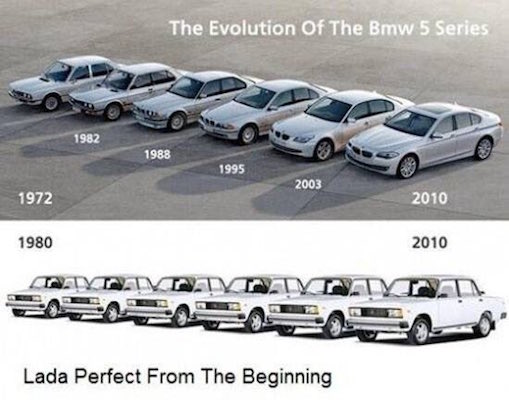
However, just like in the world of biological species, this isn’t always the case. Consider the Trabant, which first went into production in 1957, and remained virtually unchanged until 1991. How was this possible? Well, it was produced in East Germany, which was part of the Eastern Bloc and didn’t have a free market economy. Without any competition from manufacturers outside of the GDR, there was no pressure to innovate. As a result, production ceased shortly after

the wall came down in 1989. Suddenly exposing a market that’s been protected for a long time to global free market forces is like introducing rats and goats and other more competitively evolved species to evolutionary backwaters such as remote islands, and we all know what that does to the native fauna and flora.
Now that we’ve established that some species can be more advanced than others, let’s take a step back and think about the bigger picture. Ultimately, life is really about competition for resources. Whether a species can successfully exploit a particular resource depends on its genes, and every generation a population gets a new shot at producing variants that are better at it. The problem is that competitors do the same, resulting in a never-ending evolutionary arms race. Now, the rate of evolutionary change isn’t always constant, and sometimes a species does get the upper hand and manages to become more successful. But soon the tradeoffs start kicking in. For example, a larger population makes for a bigger target for predators and parasites to adapt to. Invoking the Red Queen metaphor, species have to evolve as fast as they can just to stay where they are ecologically. This makes for a pretty stable system, with levels of biodiversity tending to increase over time, unless there is a catastrophic event like an extreme volcanic eruption, or an asteroid impact.
“Now, here, you see, it takes all the running you can do, to keep in the same place. If you want to get somewhere else, you must run at least twice as fast as that!”
– The Red Queen to Alice in Alice Through the Looking Glass by Lewis Carroll.
Now try to imagine what would happen if any species ever came up with a new way of adapting to its environment, one that’s significantly faster than the conventional genetic one, say, two or three times faster. Not only would it quickly displace other species with similar niches, it would rapidly adapt to other niches and outcompete species there as well. If it can adapt fast enough, tradeoffs will be less of an issue, resulting in a runaway increase in dominance. It would obviously be the most evolutionarily advanced species in its ecosystem. (This kind of organism is called a Hutchinsonian demon.)
You may think that a species so advanced could never emerge, since in the 3.8 billion year history of life it’s apparently never happened. However, we now know that it is possible because it’s happening right now! The species that finally managed to beat evolution at its own game and take the art of adaptation to the next level is of course us — Homo sapiens. And the situation is actually way more extreme than the hypothetical scenario I just laid out. While other species are still running as fast as they can, we found the turbo button, and pushed it, accelerating us to evolutionary rates that are now ten to one hundred thousand times faster, with no end in sight. How did we do it? The trick we came up with is known as cumulative cultural evolution.
It began around three million years ago when we started making stone tools. The first tools were quite primitive and didn’t change much over long periods of time; sometimes there was virtually no change in over 100,000 years. However, during the Pleistocene, which began 2.6 million years ago, the increase in brain size and tool-making innovations accelerated. We may never know exactly why it happened then, but the most convincing and succinct explanation I’ve seen so far is offered by Peter Turchin in Ultrasociety:
“Generally speaking, the capacity for culture should evolve (assuming that such pre-adaptations as sophisticated cognitive abilities are in place) when the environment changes too fast for genetic adaptation to work, but slowly enough for information accumulated by previous generations to be useful. If environmental change is faster than that, you are better off learning everything yourself, even though it’s risky and inefficient. During the Pleistocene, apparently, environmental change was just right — not too rapid, not too slow, and very violent — to drive the evolution of culture. It’s not a coincidence that many other mammals evolved large brains in parallel with humans.”
And then something else happened: we evolved the ability to communicate symbolically using language. This greatly enhanced our capacity for social learning, which in turn increased the rate at which innovations could spread and build on each other. This greater rate of innovation allowed us to exploit new kinds of resources in cognitive time (at the speed of thought), instead of in genetic time (measured in generations). (If you want to learn more about how cultural evolution made us the most advanced species ever, check out Joe Henrich’s The Secret of Our Success: How culture is driving human evolution, domesticating our species, and making us smart.)
For example, what would it take for a water-loving terrestrial animal, like Pakicetus, to be able to take advantage of the abundance of food in the oceans? It would take about ten million years of genetic adaptations until it became as well adapted as a whale. It took us humans only a few generations to figure out how to fish with boats, spears, and nets, and our ability to compete in this niche is now so advanced that many marine species are threatened. Most whale species would probably be extinct now if some of us didn’t try to protect them.
This doesn’t mean that genetic evolution has become irrelevant to us. For example, consider one of our very early cultural achievements, the use of fire, which goes back about a million years. One of the first uses of fire was for cooking, which made many foods easier to digest. This meant that we didn’t need as large of a gut as that of a typical omnivore, freeing up resources to build an even bigger brain, one that’s even better at social learning. This also illustrates that genetic and cultural evolution influence each other, a process known as gene-culture coevolution. Some of these genes, for example genes for language, are a direct result of our adaptation to cultural evolution, which makes it part of our biology.
Earlier I mentioned that it’s hard to find that one trait that sets us apart from all other species. Could gene-culture coevolution be it? There is actually one other species that we share this trait with: orcas. Over many thousands of years, different orca populations have developed different hunting techniques, and as a result, they have become genetically isolated from each other. So because of cultural evolution, there are now five subspecies of orcas. They are obviously a very successful species, and as the global marine apex predator, they do occupy quite a significant niche. However, they are not a Hutchinsonian demon. What they don’t have is cumulative cultural evolution, and this is the trait that makes the human species a global Hutchinsonian demon.
The reason why this makes us more advanced than other species is that the greater rate of cultural evolution allows us to out-compete any species for any resource. It used to be that, as hunter-gatherers, we occupied our own ecological niche, distinct from that of other species. This meant that there was limited competition with other species for a limited set of resources. This is no longer the case. We are now — directly or indirectly — competing for all resources that all other species need, and we occupy more than one niche, namely as many as there are professions. Some professions are analogous to nonhuman niches; for example, fishermen compete directly with orcas or osprey for the same fish. Other professions don’t have obvious analogues, such as web programmers. However, there is still competition for the same basic resources. Web servers, for example, need electricity to run, which can be produced with solar energy, and solar power plants compete with green plants for the same space to collect sunlight. We’ve been clearing land for our own purposes for thousands of years, but with modern machinery the process has become very fast and efficient. It’s not even a contest anymore.
In order for an organism to effectively compete for resources, it needs to specialize. If the set of all resources needed by all life is the entire pie, then each species only gets a tiny slice. So assuming there are ten million species, each species gets on average one ten millionth of the pie. Until recently, this also applied to humans, but now — thanks to cultural evolution — our share has grown to half the pie, and it’s still increasing rapidly, with no end in sight. And due to the mechanism, the process is irreversible; therefore, our share of the pie is guaranteed to grow close to 100%, resulting in the sixth mass extinction. After previous mass extinctions, life got back to business-as-usual, eventually even surpassing previous levels of biodiversity. This time is different. This is no ‘ordinary’ mass extinction, but is better described as an evolutionary transition from a biodiversity-based biosphere to one based on techno-diversity.

